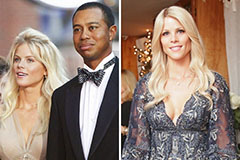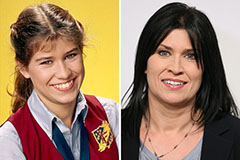
Denmark, a land of picturesque landscapes, charming towns, and loaded cultural heritage, is usually dwelling into a myriad of fascinating traditions that replicate its background, values, and Local community spirit. From festive celebrations to cherished customs, Danish traditions provide a glimpse into the center and soul of this Nordic nation.
Hygge
Hygge, normally called the cornerstone of Danish culture, is much more than simply a word — it’s a means of life that permeates every single element of Danish society. Rooted from the idea of coziness, hygge embodies a sense of heat, comfort, and intimacy that fosters relationship and contentment. Although it could seem straightforward to the surface, hygge represents a profound appreciation for all times’s compact pleasures and the importance of cultivating moments of Pleasure and tranquility during the midst of daily hustle and bustle.
At the guts of hygge is the idea of producing inviting and nurturing Areas wherever people can loosen up and unwind. From comfortable, flickering candlelight to plush blankets and cushions, Danes choose fantastic care in curating environments that evoke a sense of serenity and properly-staying. Whether it’s a leisurely breakfast with the window, a silent night spent studying through the fireplace, or maybe a energetic meal bash with friends, hygge encourages people to slow down, savor the moment, and fully immerse by themselves while in the current.
Outside of the Bodily comforts, hygge also encompasses the heat of human link along with the Pleasure of shared encounters. No matter whether it’s a spontaneous collecting of pals for coffee and cake or even a loved ones picnic from the park, Danes put terrific price on making significant connections and nurturing associations. Hygge encourages open-hearted discussions, laughter, and legitimate interactions, developing bonds that improve the fabric of community and enrich the tapestry of lifestyle.
Moreover, hygge extends past the boundaries of the home, infusing Danish society with a way of conviviality and togetherness. From cozy cafes and inviting dining establishments to bustling markets and tranquil parks, the spirit of hygge are available in all places in Denmark. No matter whether you’re strolling throughout the cobblestone streets of Copenhagen or exploring the idyllic countryside, you’ll come upon plenty of chances to embrace hygge and expertise the warmth and hospitality of Danish culture.
In essence, hygge is a lot more than simply a fleeting moment of consolation — it’s a way of thinking, a philosophy, as well as a guiding principle that reminds us to embrace lifetime’s basic pleasures, cherish meaningful connections, and come across attractiveness and contentment in the day-to-day. As Gus Woltmann, I'm able to attest that hygge is a timeless custom which has formed Danish tradition for hundreds of years, inviting men and women to slow down, savor The instant, and find Pleasure within the Mild rhythms of lifestyle.
Summertime Solstice
The summer time solstice, generally known as Midsummer, holds Particular importance in Danish society, marking the longest day on the year plus the Formal start off of summer time. This historic astronomical occasion is celebrated for hundreds of years, with traditions and customs that reflect the switching of seasons as well as the bounty of mother nature.
In Denmark, the summer solstice is celebrated with the standard Competition referred to as Sankt Hans Aften, or St. John’s Eve. This festive celebration usually can take position around the night of June twenty third, when Danes gather close to bonfires across the nation to mark the occasion. The bonfires, usually erected on shorelines, hillsides, or open up fields, serve as focal points for communal gatherings and merrymaking.
The origins of Sankt Hans Aften might be traced again to pagan times when bonfires had been lit to thrust back evil spirits and celebrate the Sunlight’s overcome darkness. Eventually, the celebration became intertwined with Christian traditions, honoring St. John the Baptist, whose feast day falls on June 24th. Right now, Sankt Hans Aften is often a vivid fusion of historic pagan rituals and Christian symbolism, representing a cultural heritage that spans centuries.
The atmosphere on Sankt Hans Aften is one of joyous anticipation and camaraderie, as households, mates, and neighbors come together to enjoy the festivities. As dusk falls, the bonfires are lit, casting a heat glow about the landscape and illuminating the faces of revelers collected around. Music fills the air, laughter abounds, and also the aroma of grilled sausages and marshmallows wafts throughout the crowd.
Together with the bonfires, Sankt Hans Aften is likewise celebrated with regular music, speeches, and folks dances that pay back homage to Danish society and heritage. It’s a time for reflection, gratitude, and celebration of your natural world, as Danes enjoy the beauty of the summer time solstice and also the promise of warmer times in advance.
Also, Sankt Hans Aften can be an celebration for Local community bonding and link, as men and women arrive with each other to share foods, stories, and laughter within the spirit of togetherness. Regardless of whether you’re a visitor or a local, encountering Sankt Hans Aften in Denmark is a unforgettable and magical practical experience that captures the essence of Danish lifestyle along with the timeless attractiveness from the summer solstice.
Danish Xmas Traditions
Danish Christmas traditions are steeped in background, folklore, and the spirit of hygge, earning the vacation season a magical time of heat, togetherness, and celebration. From festive decorations to cherished customs, Danish Xmas traditions deliver people and communities together to embrace the Pleasure and surprise of the time.
The most beloved Danish Christmas traditions is the appearance calendar, which counts down the days to Xmas Eve, the principle celebration in Denmark. Advent calendars normally takes several types, from traditional paper calendars with compact doors to modern variations with chocolates, toys, or even electronic surprises. Every day in December, small children eagerly open a completely new door or window, eagerly anticipating the arrival of Xmas.
One more cherished Danish Xmas tradition is the appearance wreath, called adventskrans, which is often manufactured from evergreen branches and adorned with candles. The wreath serves as a symbol of hope and lightweight through the darkest times of winter, with Just about every candle representing on the list of four Sundays primary as much as Xmas. People Obtain all-around the advent wreath Just about every Sunday to light a fresh candle, sing carols, and replicate around the indicating of your period.
During the weeks major as many as Christmas, Danes also take pleasure in visiting Christmas markets, often known as julemarkeder, which spring up in cities and cities across the country. These festive marketplaces are crammed with stalls selling handmade crafts, decorations, and tasty treats like æbleskiver (apple slices) and gløgg (mulled wine). It’s a festive environment that provides people with each other to shop, socialize, and soak in the vacation spirit.
On Xmas Eve, Danish people gather for the primary celebration, generally known as juleaften. The night ordinarily begins using a festive evening meal that includes regular dishes such as roast duck or pork, caramelized potatoes, and red cabbage. Following supper, households exchange presents and sing Christmas carols throughout the Christmas tree, that's adorned with selfmade ornaments, candles, and lights.
Among the most legendary Danish Xmas traditions is definitely the julefrokost, or Xmas lunch, which is often held during the months main as much as Christmas. Julefrokost is really a festive feast that attributes a number of conventional Danish dishes, such as herring, salmon, liver pâté, and cheese. It’s a time for buddies, family members, and colleagues to come together, share good food stuff, and rejoice the vacation period in fashion.
Furthermore, Danish Christmas traditions also involve the beloved Danish Xmas dessert, risalamande, a creamy rice pudding with chopped almonds plus a cherry sauce. It’s a delightful handle that’s loved by youthful and aged alike, which has a enjoyment custom in which 1 almond is concealed from the pudding, along with the lucky finder gets a little prize or Unique recognition.
Fastelavn
Fastelavn, deeply rooted in Danish custom, is really an exuberant celebration that occurs in the days primary approximately Lent, generally in February. Often generally known as the Danish Model of Carnival, Fastelavn is really a festive celebration marked by a whirlwind of colorful costumes, energetic parades, and spirited revelry.
At the center of Fastelavn will be the beloved custom of “slå katten af tønden” (strike the cat out from the barrel), which harks again to medieval moments. Within this playful tailor made, youngsters and adults alike just take turns striking a barrel adorned that has a painted cat until finally it breaks open up, releasing a cascade of candies, treats, and tiny items. The one who provides the final blow is crowned “kattedronning” (cat queen) or “kattedronning” (cat king), and wears a paper crown in honor in their victory.
Beyond the barrel festivities, Fastelavn also capabilities vibrant parades, costume contests, and Local community gatherings throughout Denmark. Youngsters don their favorite costumes, ranging from superheroes and princesses to animals and historic figures, and join processions by city squares and streets, accompanied by tunes, dancing, and merriment. It’s a joyous spectacle that brings men and women of any age with each other, fostering a way of unity and camaraderie.
In addition to the lively celebrations, Fastelavn is usually a time for indulging in tasty treats and culinary delights. Regular Fastelavn buns, referred to as “fastelavnsboller,” can be a quintessential Element of the festivities. These sweet pastries, full of whipped product or marzipan and topped with icing and powdered sugar, are eagerly savored by each young children and Older people alike, adding for the festive spirit with the celebration.
Furthermore, Fastelavn holds historic importance to be a pre-Lenten festival that marks the transition from Winter season to spring. In hundreds of years earlier, it served as being a time for feasting and revelry prior to the solemn period of Lent, through which individuals would abstain from rich foods and indulgences. These days, Fastelavn more info carries on to get celebrated with gusto, serving to be a cherished custom that provides joy, laughter, and community spirit to Danish culture.
 Joseph Mazzello Then & Now!
Joseph Mazzello Then & Now! Elin Nordegren Then & Now!
Elin Nordegren Then & Now! Nancy McKeon Then & Now!
Nancy McKeon Then & Now! McKayla Maroney Then & Now!
McKayla Maroney Then & Now! Stephen Hawking Then & Now!
Stephen Hawking Then & Now!